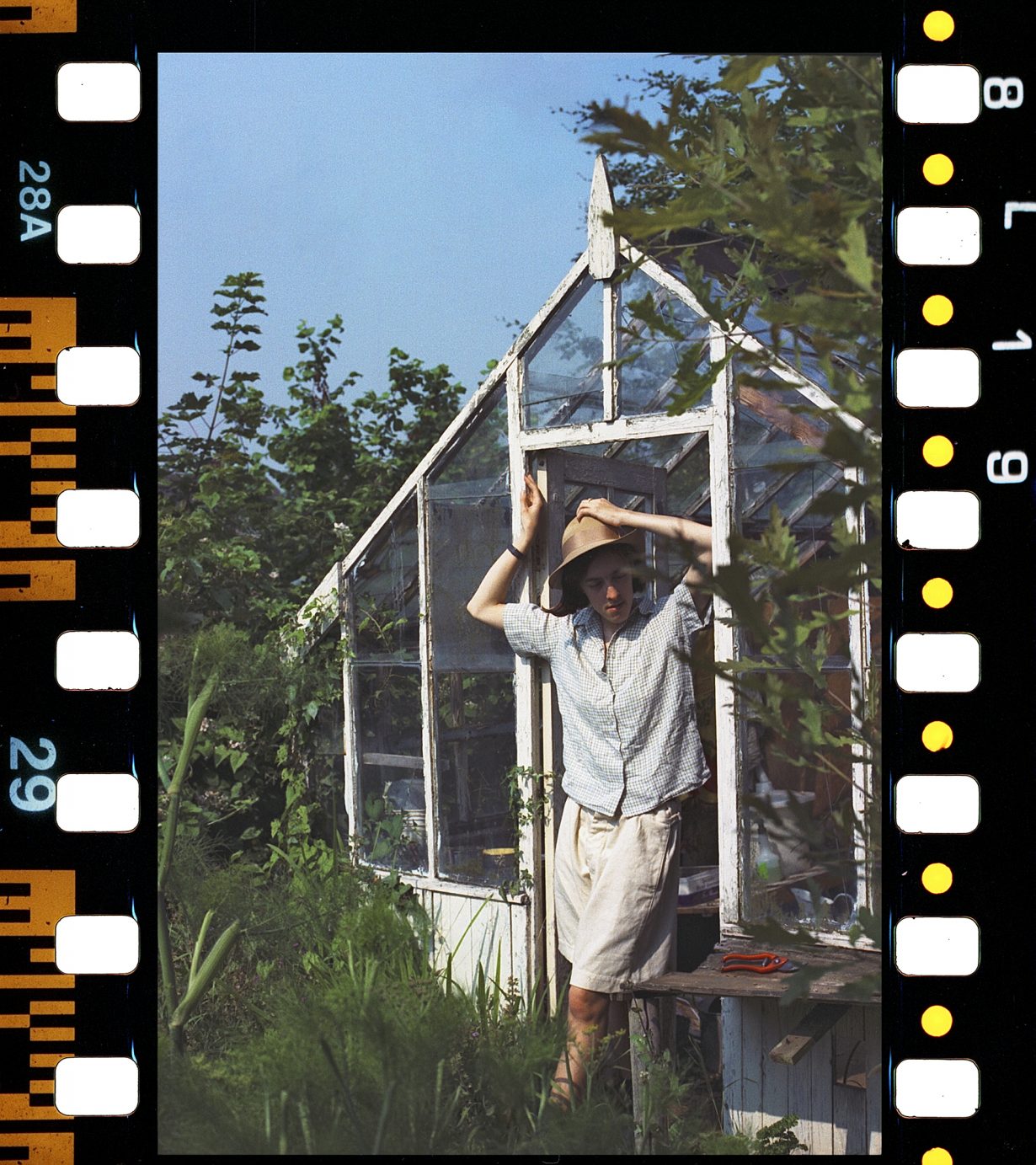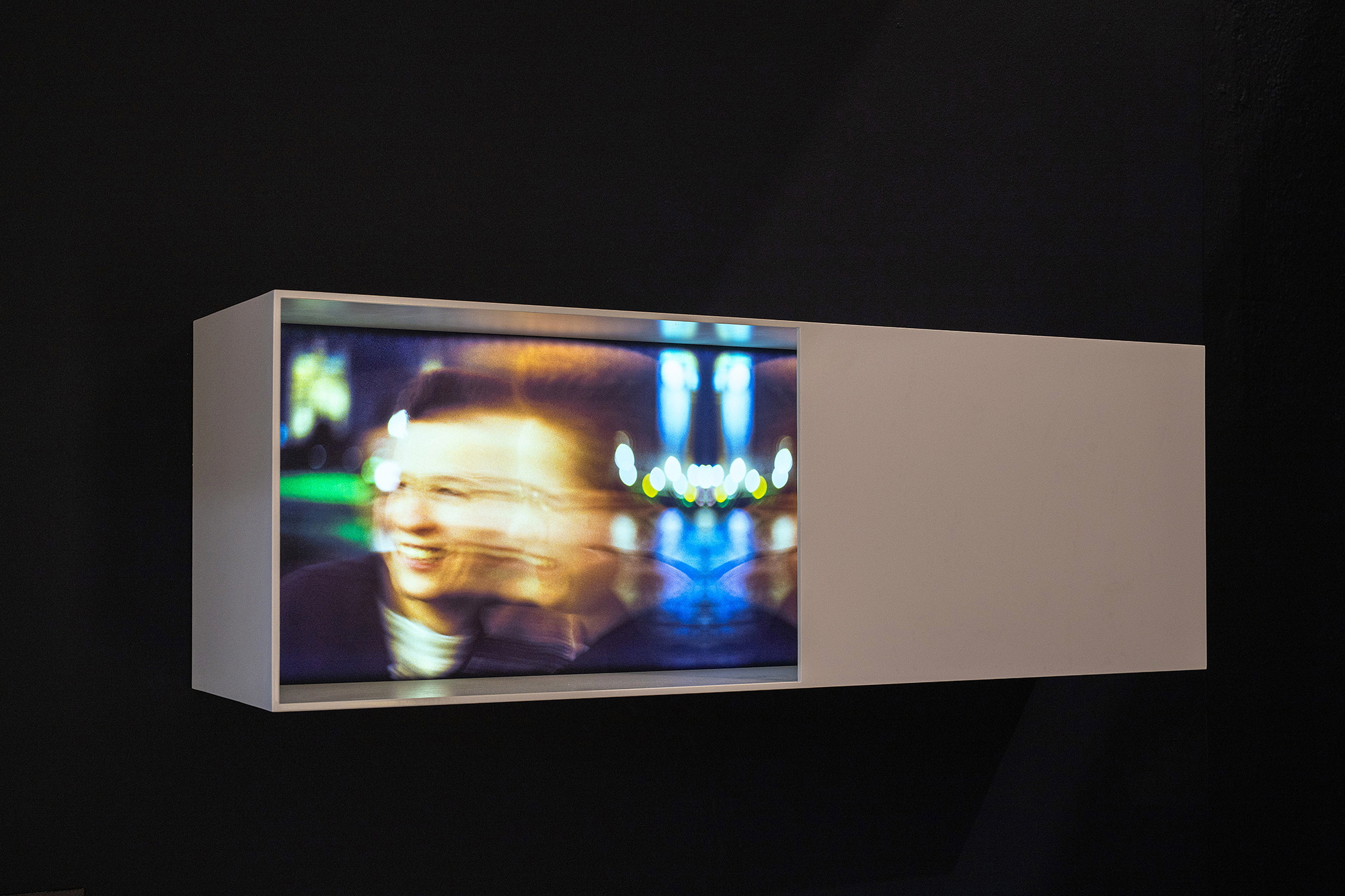A new retrospective demonstrates how the artist makes ordinary things transcend themselves
At the centre of Jyll Bradley’s retrospective, in The Box’s annex gallery, a former church, is the sculpture Running and Returning (2025). On a wide, low white plinth are sheets of plexiglass, coated with iridescent dichroic film, each around a metre high, standing upright and arranged in chevronlike groups that follow each other in a circular formation, each panel attached to its neighbour through an odd arrangement of metal bars and hoops. Spotlit, it dazzles – deep purples, acid greens, lemon yellow, hot orange, emerald blue – its colours intermingle, reflect, a kaleidoscopelike fugue of colour into which one’s gaze is drawn and gets lost.
If Running and Returning is emblematic of Jyll Bradley’s three decades of work, it’s not because Bradley has always worked in this postminimalist, abstract sculptural idiom. There are other works like this, made of similar materials – fluorescent plexiglass, mirrored acrylic, timber, steel – but there are also older photographic works, of other people, friends, collaborators, and of Bradley herself. What binds them is an attention to light, and through it what might be described as something like the euphoria of the everyday: ordinary things and moments that Bradley manages to make transcend themselves.
That celebration of the everyday first appears in earlier lightbox works that involve the smiling faces of three young women. Naming Spaces (1989/2011) comprises two illuminated images of the three; lit as if outdoors, at night, blurred and shifted by the camera’s movement, they grin at us. Superimposed across each image are passages from Marcel Proust’s In Search of Lost Time (1913–27): a moment in the first volume, Swann’s Way (1913), in which the narrator recalls the excitement of attending the theatre. It’s an odd combination, until one allows the nostalgic tone of the text to seep into the images of the women, emotional closeness and historical distance in poised balance. Alongside each lightbox, propped against the wall, is a simple sheet of powder-coated white aluminium, in the cool sheen of which one picks up, as if seen through a fog or heavy snow, the reflections of the other lit-up image.
This subtle play of memory and intimacy, of distance, loss and closeness, finds its physical form in these devices of blurring and merging. Bradley, born in Kent, then adopted, a gay woman headed to art school in London during the mid-1980s (a biography partly treated in the video M. R., 2021, projected nearby), pulls questions of subjectivity, identity and sexuality in and out of focus in these works. If there is a politics of gender here, it’s mobile and shifting: in the central, smaller space are largescale self-portraits, which Bradley took in 1987 but never presented until the 2020s. In one monochrome, Bradley is seen from the back, wearing a corduroy jacket, the focus on her cropped hair and the nape of her neck (Self-Portrait 1987–2023, 2023). Those in colour are of her dressed up in Elizabethan garb, acting out Virginia Woolf’s sex-changing and gender-shifting character Orlando (Self-Portrait as Orlando 1987–2024, 2024). Again, Bradley looks away from us, the lighting of the room – a suburban living room maybe – glows with a warm, diffuse light that escapes through the closed curtains. There’s a gentle introspection at work here, about privacy and self-possession, directed away from being fixed by one’s own image.

But though these portraits are a denial of easy identification, hung alongside and in the context of Bradley’s abstract sculptures, one realises that there’s a further layer to Bradley’s reflections on selfhood, to do with a kind of disappearance, or dissolution. The wall-mounted Grafts (2023), vertical, person-height constructions of strips of luminous plexiglass, mirror and wood, draw you to find your own reflection moving within the illusory inner space of their glittering, interlocking planes. What’s at stake is a sort of reciprocity, between object and viewer, but this extends as a metaphor for the human relationships found in her other works.
Bradley’s Grafts is a gentle rebuke to the hardness and opacity of minimalist sculpture, and while gendered interpretations of these differences have their place, what Grafts most speaks to is a sentiment of hospitality and openness. That’s perhaps most in evidence in Bradley’s extraordinary sculptural-architectural structure The Hop, first presented outside London’s Hayward Gallery in 2022, here in a smaller rendition occupying the square in front of the church. A structure of timber limbs that rise and angle out to create a pavilion of arcades, each column finned with a sequence of bright lime-green or deep blue plexiglass, The Hop is everything its surroundings are not – seemingly weightless, translucent, full of constantly changing geometry, offering play without necessity.
Though it looks like an homage to modernism (Bradley’s drawings in the show make similar nods to constructivism and De Stijl), The Hop owes its form to agricultural life, to the hop rigs of rural Kent, while the curled steel clips of Running and Returning are copies of the kind used to assemble horticultural cloches. Indeed horticulture is the subject of other works here, including largescale photographs from Bradley’s 2008 project and book Mr Roscoe’s Garden, a social history of Liverpool’s historical botanical garden. The public botanical garden is long gone, shut acrimoniously by the city council during the 1980s, but Bradley instead focused on those people who continue to care for this rare botanical collection. What ultimately ties the disparate strands of Bradley’s work together is the artist’s commitment to a politics of mutual recognition – both social and personal – in which one isn’t defined by an immobile and impervious sense of one’s own identity, but by the relationships that one cultivates, with everything, and everyone else.
Running and Returning at The Box, Plymouth, through 2 November
From the October 2025 issue of ArtReview – get your copy.
Read next: Sue Williamson’s exhibition at at The Box, Plymouth presents a careful overview of a career dedicated to memory and colonial injustice
